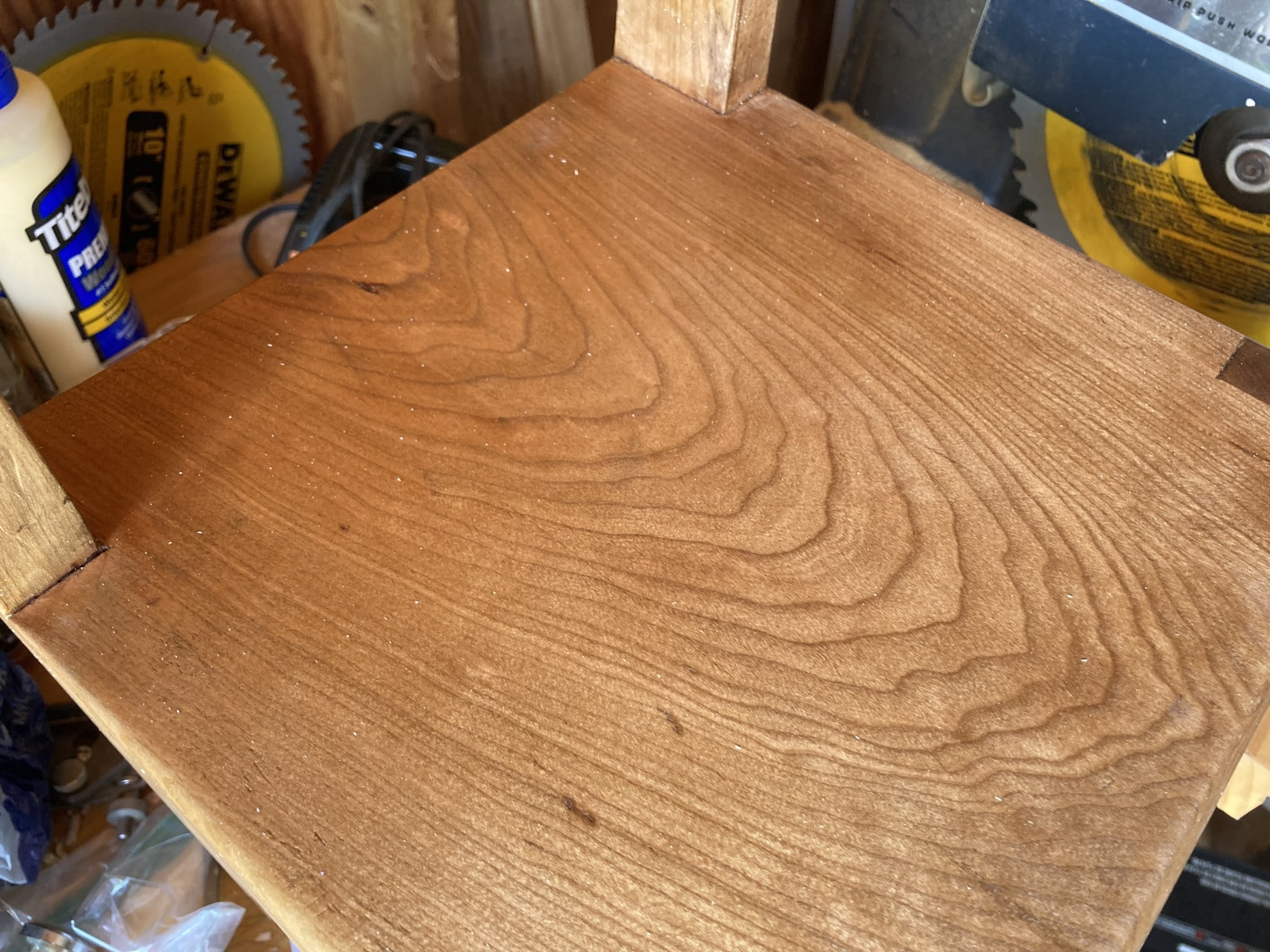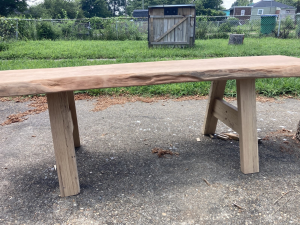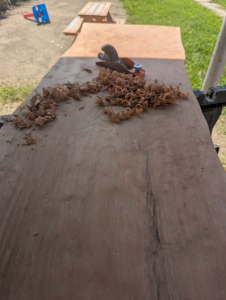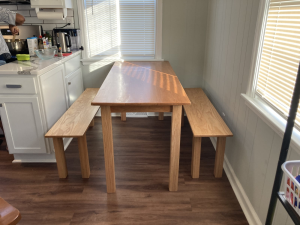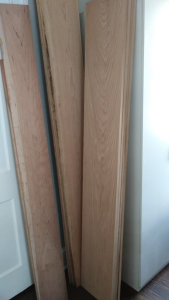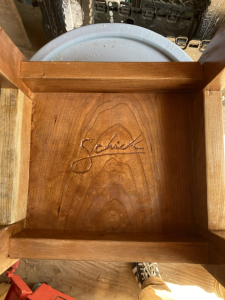Woodworking, like cycling, comes with a lecture in philosophy. When you spend silent hours working with the grain, you hear and see the lecture.
It takes time to listen and humility to understand how wood grain participates in your process.
You apply what the wood grain teaches you or else learn from your mistakes.
The Natural Starting Point
A log is a circular thing. A tree is a natural thing far from straight or simple.
There is some utility in the shape of a log. But generally speaking, to work with wood is to take it in its circular, uneven, natural form and transform it into something straight and flat and useful.
In that process of turning a log into something less like a log, the cellular structure of the wood fights back. Trees grow like bundles of straws that drink water and nutrients from the earth. When you slice into the wood in the same direction as those fibers are growing, you are slicing with the grain and the wood splits apart smoothly. When you slice in the opposite or perpendicular direction, the fibers buckle, chip and rip apart in an ugly mess.
Wood grain cuts out the work for a woodworker. The woodwork must determine how to balance between retaining the wood’s naturalness and transforming it into a thing of pure utility.
Using a Light Touch: Under Processing
On the one side of that spectrum, you have a reverence for the natural shapes of wood. This could be rustic styles, greenwood or live edge furniture. It takes the features of the wood that makes it a natural thing and puts them on full display. The natural shapes become the centerpiece.
I tend to not do as much of this type of woodworking. I feel like it gives the wood too much say in the final product.
What I like about working with wood grain is that you don’t need to be guided by the grain. Yes, you are limited by it, but that doesn’t demand a limited expression of your craft. Working with the grain is working with it rather than allowing it to work you.
The wood should be shaped by the woodworker’s intention. He must work the wood to his good purposes.
A Philosophical Lesson in Under Processing
There’s a life lesson parallel here to passivity. When we work with things other than wood, we sometimes allow the work to shape our attitude and not vice versa.
Workplaces are full of drama, complaining and frustration. Homes are full of family dynamics. When we allow work drama to stress us out and complain about work frustrations, we accept the limitations of our environment. The environment is controlling us. We know this because if we looked to have power over our environment, we’d eliminate the need to complain.
It’s as though we’ve run into a knotty section of the board we’re working with and decided it’s an important aspect of the wood’s character to emphasize. It’s okay to choose lumber for its wonky shape and decide at the start that it’s good for what you intend to do with it. But it’s laziness to allow the difficulty of working with something to alter how you work with it.
When we allow our work to shape our intentions, we miss an opportunity to shape the work.
Building for Utility: Over Processing
On the other extreme is heavily processed wood. Naturally straight pine trees are grown to be harvested quickly and turned into lumber. Plywood can be made by turning wood into pulp before forming it into a uniform board.
Many good things such as houses are made with pine lumber and plywood. Wood is an incredible material capable of providing maximum utility for certain construction purposes.
When there is a well-intentioned desire to create something with wood mixed with a lack skill or patience, the fastest tract to the goal is processed lumber. You can build furniture with 2x4s. You can even find tabletops premade in your local big box home improvement store.
The downside is that this approach to woodworking prevents the wood from showing its character. The industrialization strips the wood of participation in the art.
The grain is not being worked with. It is being minimized or avoided altogether.
A Philosophical Lesson in Over Processing
Much of modern society creates these same pipelines to optimal human satisfaction.
An inescapable talking point of last 3 years has been AI. It’s an easy target because it picked a fight with the creative pursuits. In those debates, you’ll hear an emphasis on AI’s ability to output stunning work. It’s an argument focused on utility.
If art and artist only serve as a means to the visual appearance of the final product, then AI is capable of art. AI art looks stunning. It can be hyper realistic and stylized. It can be random and imaginative. If that is what art is, if it’s the paint on the canvas, the bizarre ideas, the realism… then AI can do excellent art.
But if art is the expression of human character, AI can do no such thing. It is not human. It can’t express humanness. It can mimic in great detail, but it will be upstaged by any small child’s crayon drawing. That crayon drawing is more human than the best art the AI can do.
When we focus on utility, when lose touch with the nature of the thing we’re working with.
Grain Is the Woodness of Wood
The grain of the wood is its personality. To cooperate with its personality is to allow it to play a part without letting it to orchestrate the whole. The furniture piece becomes an expression of the woodness of the wood and the workfulness of the worker.
When you strike the right balance of working with the wood to your intention, you get a partner in the artistic process.
You should start with an intention. A good woodworking project should positively impact the people who interact with it. A good table should fit in its space well and provide adequate seating.
Then, you must get to know the wood that will partner with you in this endeavor. Get to know its personality, starting first with its family and then its individual character and quirks.
A species will tend to be softer or harder, burly and knotty or straight-grained and fragile. There is a wide range of wood attributes across species. It’s almost as though you could find a wood species for any unique combination of attributes you could imagine.
Any wood species will give you trouble in one way or another. I’ve even know boards to have multi-directional grain in unpredictable blotches. But these difficulties are what makes each passing hour of woodworking a lesson in cooperation.
You respect the woodness of the wood but you don’t let it run the show. You’ll find the common ground between what you want it to do and what it wants to do. In the end, the balance is beautiful.

